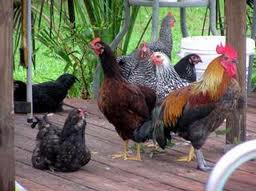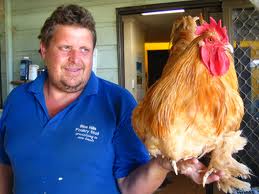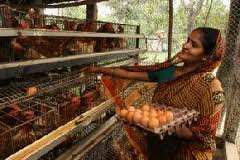Before the World War 2, poultry was considered an interesting activity but moreover, a secondary source of income. However, you could only see elderly people running after their little fellows in the backyards or smaller farms. What about the current scenarios? Things have rapidly changed over the last 20 years – the poultry is now a complete business with distributors and retailers and earns like anything. However, due to enlarged specialized operations the conventional poultry farm’s number is decreasing. Those who have brains and know how to make money still are doing well – small poultry farmers are seeking even in the minute opportunities. This merely includes marketing opportunities, but a lot of questions pop into the mind – this excerpt would answer each bit of it.
Be a good decision maker:
So, envisaging raising poultry? May be on a very small scale, it can be your desire or a way to generate money? Whatever the reason maybe, you need to play after proper research, planning and lots of consideration. What you must ask yourself?
- What goals you have set for your business?
- Is the venture profitable?
- What is the market, target market and where it is?
- Are you going to be in the business for the long run?
- Establish the minimum requirement – set your milestones
- What is the investment? How many times you would have to re-invest?
- Legal issues – restrictions?
Let’s talk about how to come the dream come true?
Housing:
Animals feel disturbed if they are not placed in their desirable homes – so, housing for poultry must be paid full attention. It never means it must be expensive or lavish but clean, ventilated, spacious and dry. Also, special attention must be paid during the changing seasons – supplement heat during chillers and coolness during hot summers.
Litter management is equally pivotal in winter to work as insulation from coldness and also from getting litter wet which may cause ammonia problem otherwise, chances of cold injuries and diseases may get high. Last but not the least; protection is the heart – otherwise, predators would get their special dinners each night.
Equipment and suppliers:
You don’t need much investment for equipments – only utensils for watering and feeding are needed. If not that you may be interested in buying electric poultry equipments, that’s your choice and pocket.
Brooding:
When it comes to brooding you need to know about heat source. It’s quite simple, you just need to have a 250-watt bulb and you are done – it accommodates up to 50 little fellows. You can always look up to commercial set-up that uses various energy sources. With all this, you would need a brooder guard – it’s a ring which is basically there for chick’s safety.
Laying hens:
Laying eggs is some most important process linked to poultry – you would need nest boxes and roost, typically 8 inch roost space is suggested for a single bird. If you talk about the one nest box (one square foot) can accommodate for every 4 to 5 birds – amongst the various sizes and types you must look for one which is 13 inches wide, 14 inches tall and at least 12 inches in depth.
Broilers:
Once you are through with the brooding process, you would need to maintain a good feeding and watering system. Once done with that you would require other necessary equipment, based on the type of system used for raising birds– movable pens would be needed if raising on pastured – similarly, there would be need for proper ventilation and fans for summers, if confinement is going on.
Lighting:
Lighting comes into play when egg production is being conversed. Also, during the winter lighting is required in order to keep the chicken coop warm. If not bulb lights all the time, you can make the most of the natural sun – especially during winters and for newly born babies.
Breed selection:
The variety and different types of breeds in the poultry world would make you go nuts – you must know what your right pick is. How can you decide for that?
For what purpose you need the breed? This would filter your options amazingly. This would cut down almost each option for you and you would be left with useful one. Normally the categories that are used for classification are;
- Egg
- Flesh
- Dual purpose
- Bantam
You can even filter the options based on the season type – it would help you to select the right breed which stays healthy within your regions climatic conditions.
Now let’s have a look at the breed types;
Egg type:
The features that make it different are;
- Light weight – this breed has finer bones
- Quick egg production – at the age of just 22 weeks
Examples:
- Minorca
- Leghorns – they are considered the best for egg production; for this reason they are cross sexed with other breeds to produce better eggs.
- Buttercups
Meat types:
These are the types which we see on our dining tables quite often. They have heavy structures; they grow faster and are very efficient. The only popular and pure type of this breed is Cornish breed.
Dual purpose breeds:
They are efficient egg and meat provider – these types grow slower. The best examples are;
- Plymouth rocks
- Wyandotte
- Orpington
Bantams:
This breed is the miniature of the larger ones; it has all the features but a reduced size, even up to one third of the standard.
Color of the egg:
It’s the only way through which the breed type can be determined – the outer color does not have any effect on the egg but people enjoy coloration.
Sources of chicken:
The possible sources include;
Hatcheries:
Inexpensive and newly born chicks can be obtained from hatcheries; however, they sell in a group of 20 or more so that chicks remain safe during shipping.
Breeders:
You get a chance to obtain a few, but these are expensive options. Breeders offer high quality birds which are often used for showcasing.
Feed and nutrition for chicken:
Indeed feed and nutrition for chicks would cost you more than anything – you have to use the commercial source here. The common types of feeding are;
- Starter – contains more than 22 percent proteins, this diet is given to the bird till it is one month old.
- Grower finisher – it contains 17 to 19 percent protein, ideal for bird with age of two months or more
- Layer ration – it has 16 percent of protein and more calcium levels.
Lastly, if you want to feed something on your own, consider talking to some expert.
Biosecuirty in poultry farms:
It tells about what you would do in order to prevent the birds from diseases;
- Cleanliness is the key – house must be neat and clean
- Wild birds must be kept away
· Age grouping clusters can help chickens grow better
–This is an extract from learningstore.uwex.edu to view complete document click the following
http://learningstore.uwex.edu/assets/pdfs/A3858-01.pdf



